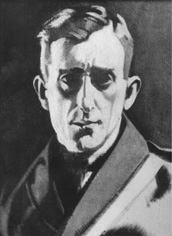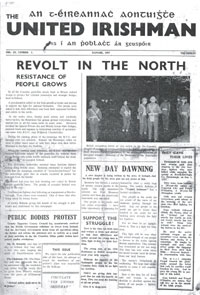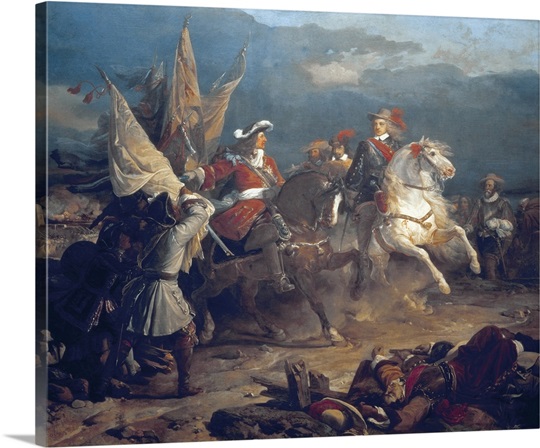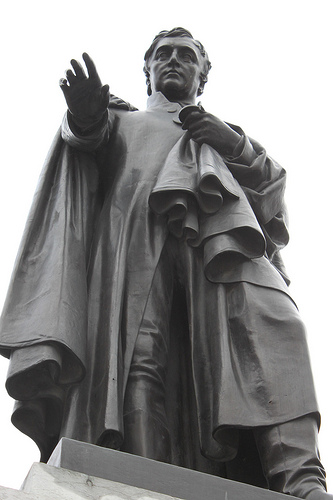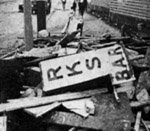15 December 1899: The Battle of Colenso was fought on this day. The 5th Irish Brigade of the British Army under Major General Fitzroy Hart [above]was engaged in action against the Boers and suffered heavy casualties.
The battle was fought on the Tugela River in Northern Natal, South Africa. The British were under Sir Redvers Buller with 16,000 soldiers and the Boers were led by General Botha with about 3,000 of his doughty men drawn from the Boer farming communities and the ‘Burghers’ from the towns - most of them first class riflemen.
To the west of Colenso the river described a loop to the North West before continuing straight. A half mile west of the loop lay Bridle Drift, a river ford. Buller directed the Irish Brigade under Major General Hart to cross the drift and drive the Boers force the passage of the Tugela.
General Hart was ordered to advance the 5th Brigade and gain the ‘drift’ or ford on the river Tugela. Early that morning the force began to move forward but General Hart insisted that his Brigade fight shoulder to shoulder as if on parade in Aldershot. He had the following battalions with which to secure his objective, three of which were Irish: 2nd Royal Dublin Fusiliers; 1st Inniskilling Fusiliers; 1st Connaught Rangers and one English the 1st Border Regiment. The General deployed his Brigade in lines of advance thus:
2nd Bn. Dublin Fusiliers, as Covering Battalion to the Front.
1st Connaught Rangers, First line.
1st Border Regt, Second line.
1st R. Inniskilling Fusiliers, Third line.
Hart had but a local Native Guide and a civilian interpreter to show him the way and it soon became clear that the Guide was as lost as he was. In addition the artillery while in support was too far away for direct instructions and Hart was basically on his own feeling his way forward. No other Brigade came to his support and the 500 cavalry he had with him had to take the rear until a passage of the river was secured.
His machine guns became separated from the rest of the Brigade and thus the Infantry advanced alone. His men spread out into one long line each battalion one behind the other. This was not what the General intended to happen as it extended his front to such an extent that it became impossible to maintain control.
Even though supported at a distance by two field batteries (64th and 73rd Batteries, R.F.A.) they soon ran into a storm of fire directed from across the Tugela. This was made worse as where they intended to cross was a loop in the river and the Boers enfiladed them from three sides.
Our burghers as well as our artillery allowed the enemy to advance unmolested to a range of about 1,500 yards with their guns, and having allowed the infantry to approach to approximately 500 yards, they suddenly unleashed a heavy fire. The enemy had orders to cross the river at this point, and although they stormed repeatedly, the fire of our burghers and artillery was so well directed and had such good effect that only a captain, two lieutenants and a few men were able to reach the river bank. Here the enemy suffered a tremendous loss in dead and wounded.
General Botha’s Official Report
General Hart described what happened to his men at this moment as follows:
The infantry had advanced only a little way, when a tremendous rifle fire was poured into us from our front, and a considerable rifle fire from our left front. There was no smoke and not a sign of the enemy himself, or even a horse, but the streaks of dust as the Boer bullets showered in, grazing the ground, plainly showed where they were, by a process of interpolation. The infantry lay down flat. Fire was new to them…
I could see officers here and there urging on the advance; and all this was so far successful that a slow
advance was made. Here and there men with better nerves pushed on. There was no panic, and once when I said to a lot of men who were deaf to my commands to advance—
" If I give you a lead, if your General gives you a lead—will you come on? "
They answered quite cheerily with their brogues " We will, sir," and up they jumped and forward they went.
Time and experience are necessary to make men go well under fire.
LETTERS OF MAJ.-GEN. HART-SYNNOT
Of those men that did reach the Tugela many fell headlong into the river for along the bottom barbed wires had been stretched. Worse still, it was found that instead of being two feet deep, as was expected, it was eight feet; for the Boers had erected a dyke across the river a little lower down, and had dammed the water back.
Hart was criticised afterwards for preventing any effort to take cover or move the attack out of the loop towards the correct crossing point at Bridle Drift, keeping his dwindling brigade in the loop for the rest of the day. He accordingly achieved nothing except heavy losses and a damaging blow to his men’s morale. Eventually orders reached him to retire and with some effort this was done under cover of the guns. The Brigade played no further part in the battle. Casualties as reported by Hart amounted to some 25 officers and 528 men, total 553, killed, wounded and missing.
An experienced Officer his conduct this day was such to indicate that bravery and a rigid adherence to orders in the face of well armed and dug in riflemen was not enough and could only lead to disaster. However he was in some respects a victim of circumstance as he had followed his orders to the letter and had acted honourably given the situation he found himself in.
Elsewhere the battle was also a bloody fiasco for the British as the Boers poured a deadly fire into the advancing ranks and eventually Buller called a Retreat, which was as ineptly handled. The British Army lost 1,167 men killed, wounded and captured while the Boers lost but a few score men. Over half the casualties were incurred by the Irish Brigade!
The British High Command had become used to fighting native armies that were poorly armed and unused to being under fire. The Boers however were Europeans well used to handling guns and the application of marksmanship. That plus their adept use of cover allowed them to dominate the battlefield and put a stop to all attempts by the British to storm their positions.
Buller was soon relieved of his position and replaced by Anglo-Irish General Lord Roberts whose only son, Lieutenant Freddie Roberts VC, had been killed in the battle bravely trying to rescue the guns from capture by the Boers – an action in which General Buller himself had put it to him to partake in!






